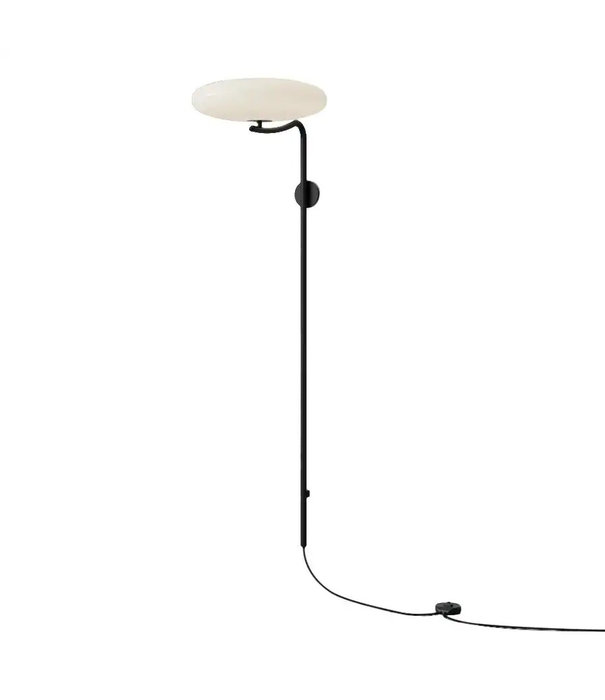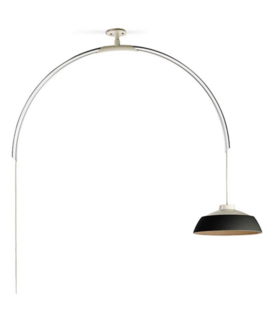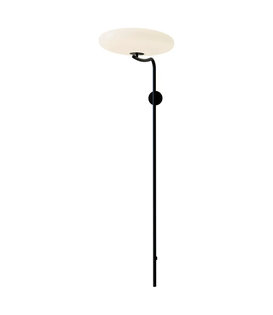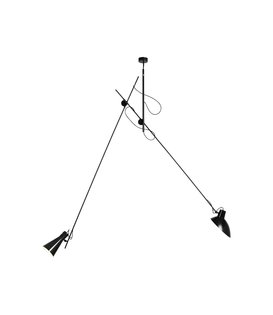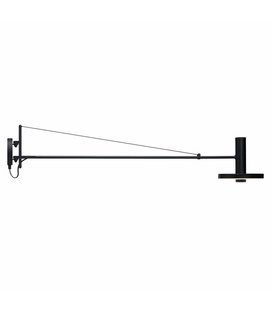
- Gratis verzending NL/B vanaf €100,-
- Nordic New bestaat 25 jaar
- Showroom 6 dagen p. week open van 10-17.00
- T 085 1303619 - [email protected]
Astep Model 2065 Wall lamp.
The Astep 2065 wall lamp was designed by Gino Sarfatti in 1950 and has been improved and re-released by the Astep label. In the period that Gino designed the lamp, most lamps were made of glass, porcelain or metal. This is one of the first plastic hanging lamps made of methacrylate, which later became known under the term plexiglass.
A major advantage of this material used is that it is light in weight and stronger than glass. The simplicity of the elliptical design of the Astep 2065 lamp and the choice of materials used make it an airy and modern wall lamp.
The Astep 2065 Hanging Lamp was taken into production again in 2016 by the Danish company Astep,
The model 2065 is made of two connected opaline methacrylate dish-shaped diffusers, which rest on an elegantly curved tube structure for wall mounting. The lamp comes in two versions: one is intended for wiring from the wall, while the other is equipped with a cable + plug and dimmer that plugs into a standard socket.
The diffusers are made from Green Cast®, a 100% recycled and recyclable PMMA (polymethyl methacrylate) — patented and made in Italy — which has exactly the same aesthetic and functional quality as original methacrylate.
The 2065 lamp comes with 5 pieces of environmentally friendly dimmable LED light sources. The color of the light is 2700K, which we experience as warm light. The 5 LED light sources each deliver 4 W, which corresponds to the light output of 5 25 Watt light bulbs.
Material: Opaline Methacrylate Diffusers, Aluminum Structure.
Dimensions: Dia 538 x 680mm. / H 1900 mm.
Weight: 5.1 kg.
Light source: 5 x E14 LED 4.5 (12W Max) 470lm (2350lm total) 2700 Kelvin, dimmable Bulbs included.
About the designer:
The Italian designer Gino Sarfatti (1912-1985) was a master of lighting design and founder of the lighting brand Arteluce. Sarfatti was born in Venice and moved to Genoa to study aeronautical engineering until he had to interrupt his studies due to the war in the late 1930s. Sarfatti founded Arteluce in Milan in 1939.
In 1943 he and his family had to flee from Italy to Switzerland, but after the war they returned to Milan to reorganize the production of Arteluce. The 1950s were a golden age for Arteluce: in 1954, two of Sarfatti's lamps were awarded the Grand Prix at the Milan Triennale and in the following two years his designs received the Compasso d'Oro prize. In 1973 Sarfatti sold Arteluce to the Italian lighting manufacturer Flos, which continues the production of Sarfatti's design classics.
Weight: 1000
